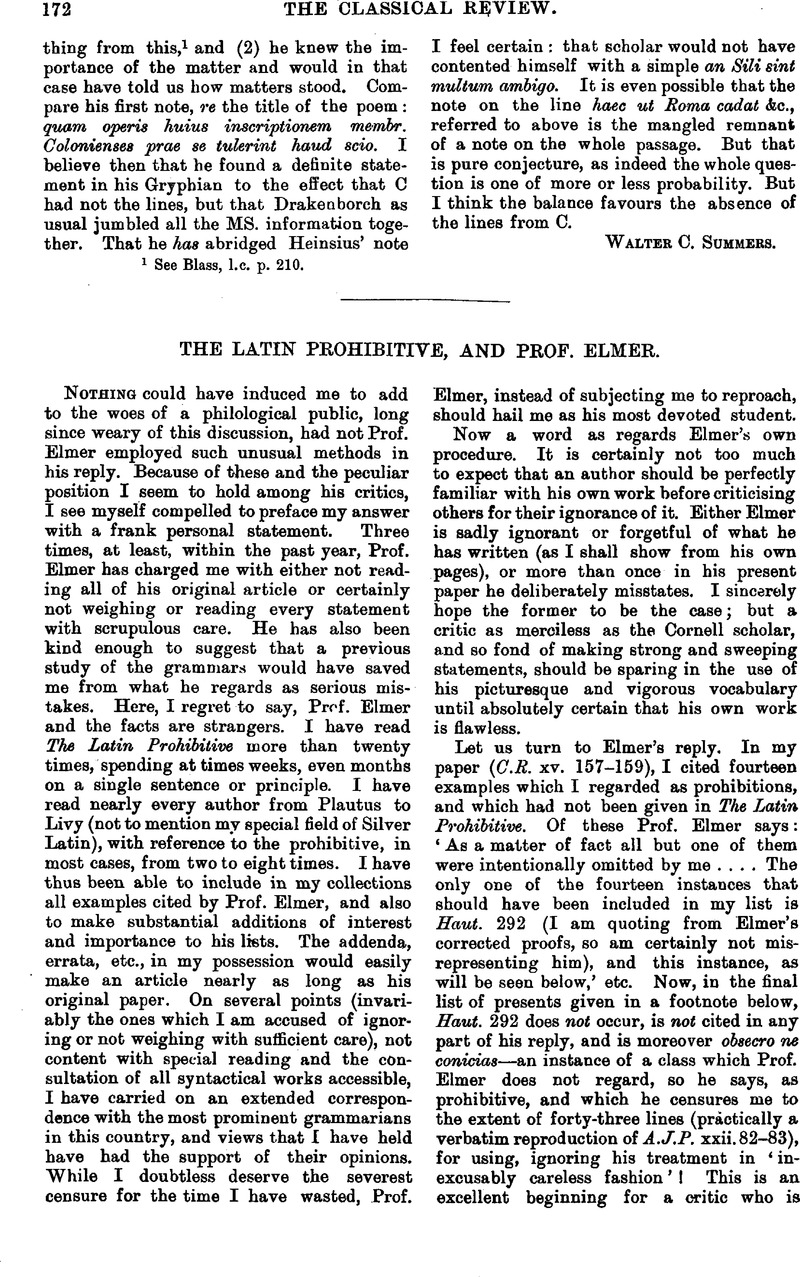No CrossRef data available.
Article contents
The Latin Prohibitive, and Prof. Elmer
Published online by Cambridge University Press: 27 October 2009
Abstract

- Type
- Original Contributions
- Information
- Copyright
- Copyright © The Classical Association 1902
References
page 173 note 1 Prof. Lodge confirms this in a personal letter.
page 176 note 1 Some of the errors in his statements and statistics on these other subjects have already attracted attention, namely those in ‘The Supposed Potential Use of the Subjunctive Mood,’ Studies, vi. Where, e.g. he ‘ believes ’ erraverim fortasse in Plin. Ep. 1, 23, 3 to be ‘ the only instance’ of the perfect subjunctive with fortasse ‘in Latin literature,’ my paper in C.R. xiv, 4 gave nine from the Pseud.–Quintil. Declamationes. Where he says that ‘certainly none other occurs before the period of decline,’ Professor Hale, in ‘ Is there still a Latin Potential’ (Transactions of the American Philological Association, 1900) pointed out that Sjöstrand (Quibus temporibus, etc., 1891) gives two sure instances from the Institutes of Quintilian, which come within the period which the word ‘ other’ implies. Where Elmer says ‘ I can find ’ no example ‘ at all ’ of an Imperfect or Pluperfect Subjunctive with forsitan except Cic. De Or. 2, 45, 189, and Verg. Georg. 4, 116, Professor Hale pointed out that Merguet's Lexicons to Cicero afford three more cases, and that Sjöstrand's monograph affords forty-seven more from Ovid, Livy, Quintilian, and later writers.




